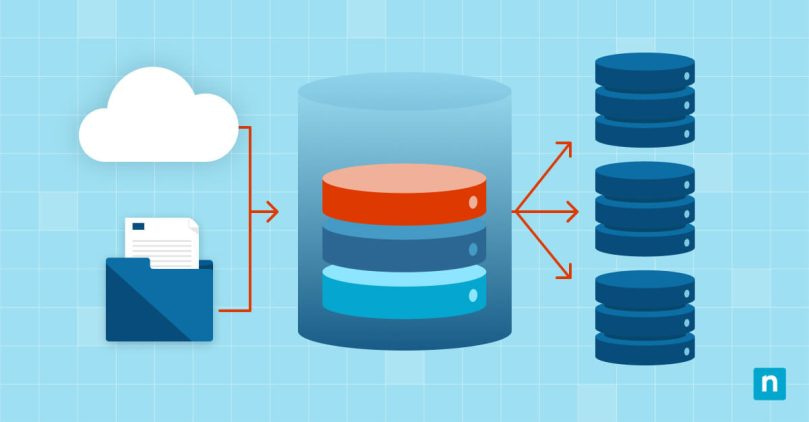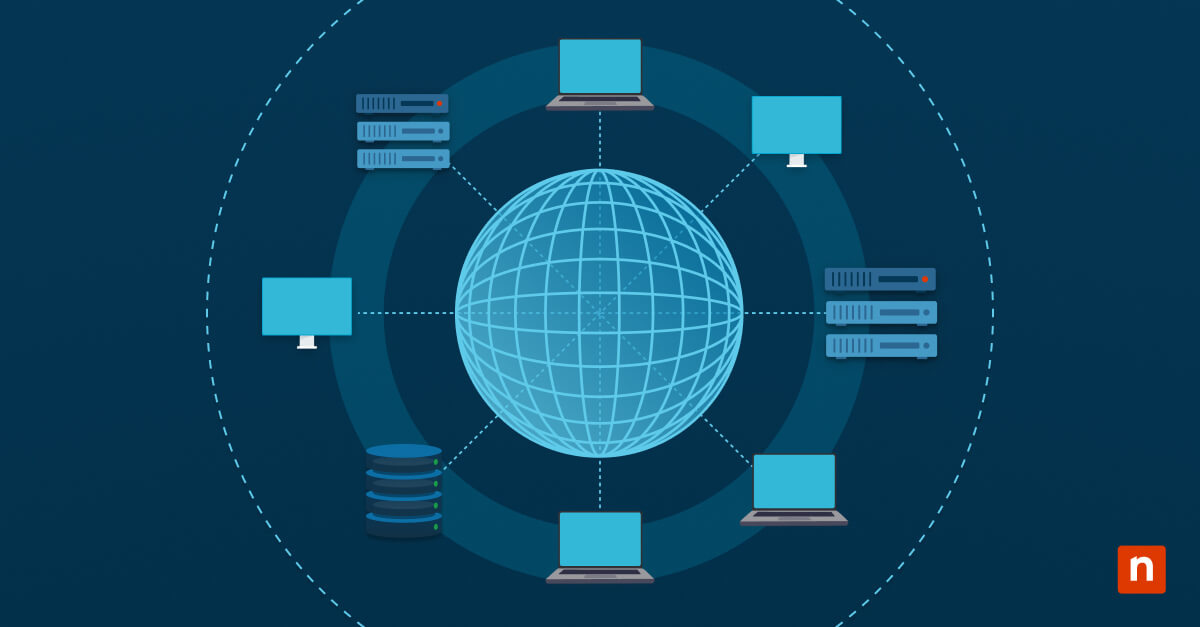Data is undoubtedly the lifeblood of many modern businesses, driving their insights and strategic decision-making. This important relationship with analytics requires a robust, forward-thinking approach to data management.
At the heart of such data management lies the data warehouse – a pivotal part of every IT infrastructure that transforms raw information into actionable intelligence. This article explores the fundamental aspects of data warehousing, offering a comprehensive overview of its definition and intricate workings. By unraveling the complexities of data warehousing, you will gain a greater understanding of how this technology functions as a central repository, enabling organizations to streamline their data, enhance analytical capabilities, and ultimately propel themselves towards a more data-driven future.
To begin demystifying the concept of data warehousing, we will navigate through the core principles that underpin its design and functionality. From the organization of structured data to the orchestration of complex queries, we’ll dive deeper into a data warehouse’s architecture.
Whether you’re a seasoned IT professional looking to deepen your knowledge or a newcomer eager to grasp the essentials, this article aims to be your definitive guide to the significance of data warehousing technology in the landscape of data-driven decision-making.
What this article will cover:
- What is a Data Warehouse?
- Benefits of Data Warehouses
- How Does a Data Warehouse Work?
- Types of Data Warehouses
- Data Warehouses: Examples and Use Cases
What is a data warehouse?
A data warehouse is a centralized repository designed to store, organize, and analyze large volumes of structured and often historical data. At its core, the primary purpose of a data warehouse is to provide a comprehensive and unified view of an organization’s data, allowing for efficient reporting, analysis, and more informed decision-making.
The key differentiator between a data warehouse and traditional databases lies in their design and functionality. While traditional databases are transaction-oriented and focused on day-to-day operations, data warehouses are strategically engineered to handle complex database queries and support analytical processing. This distinction allows data warehouses to consolidate data from disparate sources, transforming it into a format that facilitates meaningful insights, trends, and patterns.
What is the primary purpose of a data warehouse?
The primary objectives of a data warehouse revolve around providing a platform for extracting actionable insights from vast datasets. This includes aggregating and integrating data from various sources, ensuring data quality and consistency, and delivering performance optimizations for analytical queries.
Data warehousing use cases span a wide spectrum, ranging from business reporting and performance analysis to forecasting, trend identification, and strategic planning. By empowering organizations to harness the power of their data, data warehouses play a pivotal role in enhancing decision-making processes and fostering a more data-driven approach to business operations.
Benefits of a data warehouse
Data warehouses offer many advantages for businesses seeking to harness the full potential of their data assets. One of the top benefits lies in the enhanced efficiency of decision-making processes. By consolidating disparate data sources into a single platform, organizations can access a comprehensive and cohesive view of their data. This, in turn, facilitates quicker and more informed decision-making, empowering stakeholders at all levels with the insights needed to respond promptly to market trends, customer behavior, and internal performance metrics.
Data analysis and reporting undergo a transformative upgrade with the implementation of a data warehouse. The streamlined structure of these repositories enables users to run complex analytical queries with remarkable speed and precision. As a result, businesses can extract meaningful patterns and trends from their data, fostering a deeper understanding of their operations and market dynamics. The reporting capabilities of data warehouses can also be used to generate insightful reports, allowing for clear communication of key metrics and performance indicators throughout the business.
Scalability stands as another cornerstone benefit of data warehousing. Data warehouses provide a scalable solution that accommodates this growth seamlessly, ensuring that the infrastructure can evolve alongside the increasing demands of the organization. The support for big data analytics within data warehouses positions businesses to extract valuable insights from massive datasets, paving the way for innovation, competitiveness, and sustained success in the world of data-assisted decision-making.
How does a data warehouse work?
At the core of a data warehouse’s functionality lies a carefully crafted process designed to transform raw data into actionable insights. The data warehousing process typically begins with Extraction, Transformation, and Loading (ETL).
During the extraction phase, data is gathered from diverse sources such as transactional databases, external systems, and flat files. In the transformation stage, the extracted data undergoes a series of operations to ensure uniformity, consistency, and relevance. This may involve cleaning and standardizing data, resolving inconsistencies, and converting formats to align with the data warehouse’s schema. Once transformed, the data is moved into the data warehouse during the loading phase, where it can be accessed for analytical processing.
Data modeling and schema design constitute critical elements in data warehouse architecture. The process involves creating a blueprint that defines how data will be organized and structured within the warehouse. This includes designing tables, relationships, and metadata that facilitate efficient querying and analysis. Common data modeling techniques, such as star schema and snowflake schema, are employed to optimize the database for analytical purposes. These schemas organize data into a format that simplifies complex queries, ensuring that businesses can swiftly derive meaningful insights from their datasets.
The interconnected nature of these processes enables data warehouses to function as powerful engines for analytics. The ETL process ensures that data is continuously updated and refined, maintaining the integrity of the warehouse. Simultaneously, the data modeling and schema design principles establish a foundation for seamless querying and reporting, providing users with a structured and efficient environment for data analysis.
Types of data warehouses
Data warehouses come in various forms, each tailored to meet certain organizational needs and objectives. Understanding the different types of data warehouses is crucial for selecting the right model that aligns with unique and specific business requirements.
Enterprise Data Warehouse (EDW)
The Enterprise Data Warehouse is the most comprehensive and centralized type of data warehouse. It integrates data from various departments and business functions across an entire organization. By providing a unified view of enterprise-wide data, EDWs facilitate comprehensive analysis and reporting, supporting strategic decision-making at the highest levels.
Data mart
A data mart is a type of data warehouse that focuses on a specific business unit, department, or functional area within an organization. It is a smaller, more specialized database designed to meet the unique requirements and analytical needs of a particular group or team.
Dependent data mart
This type of data mart relies on the enterprise data warehouse for its source of data. It focuses on specific business units or departments, catering to their unique analytical needs.
Independent data mart
In contrast, an independent data mart operates as a standalone entity, sourcing data directly from operational systems. This model is often favored for its agility and quick implementation, addressing the specific requirements of a particular business unit.
Operational Data Store (ODS)
An ODS serves as a temporary repository for data sourced from various operational systems. Unlike traditional data warehouses, an Operational Data Store is designed for real-time or near-real-time data processing. It acts as an intermediary stage before data is loaded into the data warehouse, ensuring that information is current and relevant.
Cloud data warehouse
With the advent of cloud computing, data warehouses have evolved to embrace cloud-based solutions. Cloud data warehouses offer scalability, flexibility, and cost-effectiveness by leveraging cloud infrastructure. They enable organizations to store and analyze data without the need for significant on-premises hardware investments.
Real-time data warehouse
In scenarios where real-time insights are critical, real-time data warehouses come into play. These systems enable the processing and analysis of data as it is generated, allowing organizations to make decisions based on the most up-to-date information available.
Choosing the right type of data warehouse depends on factors such as the organization’s size, data complexity, and analytical requirements. Whether opting for a centralized enterprise approach or a more decentralized model with data marts, the goal is to create a strategic data infrastructure that empowers users to extract valuable insights and drive business success.
Data warehouses: Examples and use cases
These instances highlight the versatility of data warehousing while also showcasing its pivotal role in enhancing decision-making processes and driving organizational success. By examining these real-world examples, we can better comprehend the practical impact of data warehouses.
Amazon Redshift
Amazon Redshift, a cloud-based data warehouse service, is used by numerous businesses to analyze large datasets with high performance and scalability.
Data is collected from various sources, such as customer transactions, website interactions, and inventory records. Through Amazon Redshift’s ETL capabilities, this raw data is transformed and loaded into the data warehouse.
Once the data is in Amazon Redshift, businesses can conduct extensive analytics to understand customer behavior, optimize inventory management, and refine marketing strategies. The data warehouse enables quick and efficient querying, supporting the generation of insights for strategic decision-making.
Walmart’s Teradata Warehouse
The retail giant Walmart utilizes Teradata Warehouse as its data warehousing solution to integrate and analyze massive volumes of data from various retail operations.
Data is collected from in-store transactions, online sales, and supply chain operations. Teradata Warehouse’s robust ETL processes transform and consolidate this diverse data into a cohesive format within the data warehouse.
Walmart leverages Teradata Warehouse to analyze customer purchasing patterns, optimize inventory levels, and enhance the overall customer experience. The data warehouse enables Walmart to gain actionable insights into its operations, influencing strategic decisions across the organization.
Delta Air Lines’ Snowflake Data Warehouse
Delta Air Lines employs Snowflake as its cloud-based data warehousing solution to process and analyze vast amounts of operational and customer data.
Data is collected from various sources, including flight operations, customer reservations, and crew management systems. Snowflake’s ETL capabilities transform and load this data into the cloud-based warehouse, ensuring a unified and structured dataset.
Delta utilizes Snowflake to analyze flight performance, optimize route planning, and personalize customer experiences. The data warehouse’s scalability and flexibility empower Delta to adapt to changing market conditions and make data-driven decisions in real-time.
In summary
As organizations grapple with an ever-expanding volume of data, data warehouses offer a centralized and efficient solution for storage, organization, and analysis. The ability to extract actionable insights from vast datasets, coupled with the streamlined decision-making processes underscores their critical role in the current business landscape.
In an era where data-driven strategies are paramount, these repositories continue to evolve, adapting to the complexities of big data and real-time analytics. As data warehouse technology advances, its role in shaping and supporting data-driven strategies cements it as a cornerstone in the architecture of successful, forward-thinking enterprises.








